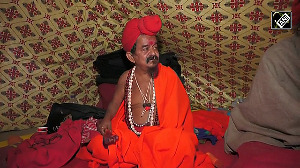What in a few years will be India's largest shopping mall today is a kilometre-long, three-storey deep hole in the earth marked with a billboard the size of a tennis court.
By 2010, the "Mall of India", in what is now the dusty New Delhi satellite city of Gurgaon, will comprise 4.5m square feet of gleaming retail space, more than double the size of the biggest existing mall in India. It will boast 9,000 parking spaces and be connected to the New Delhi metro by its own light rail system, the first of its kind in the country.
It may not be ready in time for Christmas but the Mall of India, which is being constructed by DLF, the country's biggest property developer, will be the greatest monument yet to India's emerging consumer class, a generation as addicted to spending as their elders were to thrift.
"There is a paradigm shift in Indian retail," says Rajeev Talwar, group executive director of DLF. "India's growing prosperity - the large population of under 25-year-olds who have grown up in an economy that is booming - means that lifestyles and shopping habits are shifting in favour of malls."
Despite having more than 1bn people, India had just six malls covering 1m sq ft of space in 2002, according to Jones Lang LaSalle Meghraj, a property consultancy. By the beginning of 2007 that had risen to 90 malls covering 19m sq ft. It is expected to rise threefold next year.
Driving the growth is a rapid rise in middle-class salaries and the emergence of a high-income class, with 1.6m households earning more than $100,000 (Euro 69,000, £50,000) a year. Aside from Mall of India, DLF is building a "super luxury" mall in Delhi, the Emporio, that will feature a 10,000 sq ft "watch zone" displaying the world's most expensive time pieces.
Complementing India's retail phenomenon is an exponential increase in consumer credit. "The Indian consumer today is less shy about borrowing," says Sanjay Nayar, chief executive officer of Citigroup in India.
The rise of so-called "organised retail" is also critical to the mall boom in India. Corporate chains today have a tiny share of India's $300bn-plus retail business but this is set to rise to about one fifth of the market within five years, according to estimates from Technopak, a research and consultancy firm.
For Sejal Acharwya, an office worker in Mumbai, the advent of malls has meant being in greater touch with fashion. "If you go to the mall, you know what's happening in the city, what's in and what's out," she says.
Analysts caution, however, that plenty of hype is accompanying the boom. In a recent report, Jones Lang warned that "over 90 per cent of the current and planned shopping mall stock falls below international quality in terms of specification and design".
The infrastructure surrounding malls is also a problem - many can only be reached via pot-holed roads through slums.
Government restrictions on the entry of foreign retailers, most visibly on groups such as Wal-Mart, Carrefour and Tesco, means developers may struggle to find enough deep-pocketed tenants to populate their malls. The world's biggest retailers also carry some baggage after bad experiences in other emerging markets.
"There are multiple retailers who don't want to franchise in India [because] they've been burned in places like Russia and China," says Vincent Lottefier, chief executive officer of Jones Lang in India.
Local retailers are rushing to fill the void. Sankarson Banerjee, an executive with India's largest retailer, Pantaloon, says the group has doubled and tripled the number of its "Big Bazaar" supermarkets but still faces queues outside its stores.
On sale days, the hordes of shoppers have become so unmanageable that executives at Future Group, who own Pantaloon, have been studying crowd control techniques used at temples during festivals - still the biggest crowd pullers in deeply religious India.
How to deal with those holidays is another issue for retailers. There are 51 public holidays celebrated in India, but only a few are marked nationally. The majority are observed by diverse ethnic and religious groups at different times - one district in a large city like Mumbai might celebrate the Muslim holiday of Eid, the next district the Hindu celebration Diwali - making it fiendishly difficult for retailers to time their sales.
To get around this, the Future Group invented two sales days of its own, one each on India's Republic Day and Independence Day holidays. "These are the only days when everybody is guaranteed to be on holiday," says Mr Banerjee.






 © 2025 Rediff.com -
© 2025 Rediff.com -